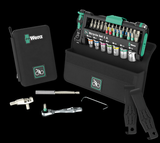Tech Tip for Wet Pressure Sensors
MONITORING WET-WET DIFFERENTIAL PRESSURE
The challenges with monitoring wet-wet differential pressure
Traditional installations of wet-wet differential pressure sensors are costly and time consuming. Every unit requires plumbing copper tube runs from the supply and return lines back to a wall mounted unit. Many times a bypass manifold assembly is required as well, adding additional cost and time to the installation. With a price tag of over $500 for just the wet-wet dp sensor and bypass manifold, plus paying a plumber for the time and materials, Senva saw an opportunity to improve on traditional installations that will help save you time and money!
Opportunities for improvement on installations
There are three major opportunities to improve installation method on wet-wet differential pressure sensor installations: Ending of copper tube runs, eliminating the need for bypass manifolds and minimizing labor. Opportunities for improvement on installations
• Ending copper tube runs - rather than plumbing the pressure back to a wall mounted sensor, choose a unit that allows bringing the sensing elements to the pipe to take readings right at the source.
• Eliminating bypass manifolds - by tapping right into the supply and return lines, a bypass manifold assembly is no longer required to bleed/purge the lines.
• Minimizing labor - cut down on manual labor required to plumb or assemble unnecessary components.
Protection from system water hammer
To continually improve our PW Series, Senva has implemented built-in snubbers in every PW sensing element. Our built-in snubbers are designed to prevent permanent damage to the sensing elements caused by water hammer. What is water hammer? Water hammer can occur when a pipe is suddenly closed downstream when the media before the closure is still moving, building up high pressure and a resulting shock wave. This can create potentially damaging force that is capable of damaging sensing elements that are not protected with a pressure snubber. Don’t let your wet-wet differential pressure system performance get hammered by water hammer and choose Senva.
Choosing the best solution for each application
Senva now has two units to choose from that will improve your wet-wet differential pressure sensor installations. Both are part of the PW Series and will end the need for copper tube runs, eliminate bypass manifolds and minimize the labor during installation. The PW Cable series features remote sensing elements that tap right into the supply and return lines that connect via deutsch connectors to prefabricated plenum cables cut to a custom length at our factory. Choose from standard or armored plenum cables to meet project requirements. The PW Conduit series also features remote sensing elements that tap right into the supply and return lines and include a 1/2” conduit adapter that allow a technician to wire 4-conductor shielded cable through conduit back to the transmitter.
Recent Posts
-
WERA Advent calendar 2025, 28 pieces
The 2025 Wera Advent calendar includes a comprehensive screwdriving workshop for the most common sc …2025 Nov 19th -
Wera Bicycle tool set
Bike tool set with ratchet, bits, sockets and a bitholding screwdriver in the very compact Tool-Che …2025 Jul 24th -
DUCT CARBON DIOXIDE TRANSMITTER
The duct CO2transmitter uses a highly accurate andreliable non-dispersive infrared (NDIR) sens …2025 Apr 3rd


